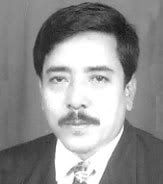Nanotechnology
Nanotechnology entered the more public arena in 2001 when President Clinton
brought worldwide attention to nanotechnology through his budget approval for the
US National Nanotechnology Initiative (NNI). The initial budget allocated for
nanotechnology in 2001 was $422 million, which demonstrated the anticipated
relevance of nanotechnology to the USA economic growth as well as nanotechnology’s
strategic importance to national security. Three years later, in December
2003, President Bush signed the 21st Century Nanotechnology Research and
Development Act, which allocated a budget of $849 million to the NNI, doubling
the initial budget from 2001. After the clear message of commitment of the United
States to nanotechnology since 2001, governments around the world reassessed
their current national nanotechnology policies or finally began to develop their own
focused long-term position in nanotechnology. Since then national government
investments into nanotechnology have increased to over $3 billion worldwide in
2003. A number of state governments have started to implement their nanotechnology
support in addition to the already existing, substantial national government
funding, bringing the public funding for nanotechnology up to an estimated total
of $4 billion. Investment by industry alone is estimated to have added another
$1 billion in 2003 (APNF).
What is it that nanotechnology to offer that has prompted governments and
industry alike to commit substantial funds to a technology which science geeks
started to talk about only a few years ago? What is nanotechnology bringing to the
innovation table that cannot be ignored by financial and economic planners?
Nanotechnology aims to master engineering at the nanometre scale. Nanotechnology
deals with the engineering at a size scale that is currently challenging the entire
semiconductor industry in its effort to further miniaturize chip design. It is working
at a scale which is so familiar and natural to the biotechnology industry since its
own inception. What sets nanotechnology aside from biotechnology is that
nanotechnology in addition to biological building blocks also deals with the
engineering and controlling of building blocks of any inorganic as well as mixed
biological/inorganic building blocks at the nano-scale (natural and/or artificial
origin). Mastering of technology at this size scale has the potential of being able
to customize any thinkable type of material the way we want it to be or to create
properties which only a few years ago were thought not to be in reach in the near
future.
Will this then introduce a new generation of gadgets more powerful and more
versatile than the ones we have just bought? The answer is yes, but it is only a
partial yes since the (electronic) gadgets industry will take some time (6–10 years)
until it will have mastered the mass production of nano-engineered based components.
Nanotechnology will have a more profound and immediate impact on
industry dealing with materials such as aerospace, automobiles, coatings, construction,
cosmetics, ceramics, composites, agriculture, detergents, die moulding, drug
delivery, fertilizers, food, fuel production, lubricants, medical supplies, metals,
optical equipment, paint, paper, pharmaceuticals, polymers, power generation,
sensors, tools and textiles, to name but only a few industries that come to mind
immediately. The rapid pace at which nanotechnology is moving forward is
probably the main reason that it has come to the attention of almost every policy
maker and senior manager.
Although biotechnology has long been observed and supported, its full commercial
potential is expected to come to fruition only within the next 20 years or so. In
contrast to biotechnology, nanotechnology has already found its application in some
of the largest industries, such as the textile industry, due to the advantage of not
requiring the long clinical trials that are needed for any new biotechnology product.
Another major difference between biotechnology and nanotechnology is that
biotechnology focuses on a single main base material, i.e. genes and cells, while
engineering at the nanoscale is almost unlimited in its choice of base materials, may
it be mineral, plant, animal, human, or combinations of such. That, of course, raises
some brows. Consequently, nanotechnology has found an immediate spot on
agendas of policy makes and industry leaders.
Since 2001 an average of about 20–30% of national funding is matched by state (province) funding.Private funding (industry, venture capital) is estimated to be larger than government
funding except for the smaller Asian development countries. After an initial boost
by governments, funding for nanotechnology has steadily decreased over the past
years, which reflects both cautious national budgeting and the additional financial
input from private investment as the first R&D spin-offs and products are entering
the market.Interestingly, this general trend is not shared by Europe and
Asia (excluding Japan). In Europe, additional public investment in nanotechnology
is increasing at a staggering rate
Most of Asia is used to long-term national plans raging from 5 to 10 years, which
requires considerable planning ahead, including major infrastructure building.
China’s investment commitment for the five-year plan ending in 2005 is $280 million
for Korea’s ten-year plan ending in 2010 it is $2 billion; and it is $620 million for
Taiwan’s five-year plan ending in 2007. Malaysia allocated 9% ($23 million) of its
8th five-year plan to nanotechnology and precision engineering (Plan Intensification
of Priority Research Areas) ending 2008. Thailand is earmarking $25 million for
nanotechnology for the five-year period ending in 2008, and Japan will be investing
over $900 million each year over the next five years. Australia has identified
nanotechnology as one of its four funding areas of national priority.



